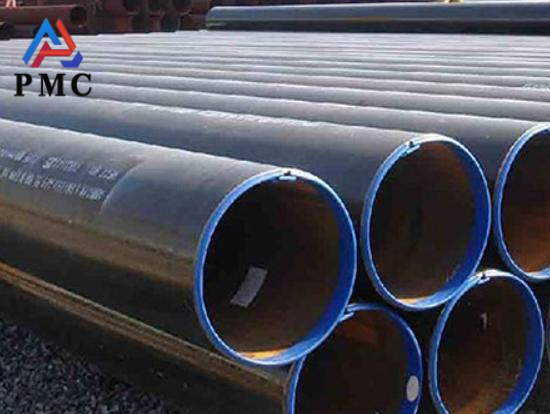
ASTM A106B Carbon Steel Pipe
ASTM A106B Carbon Steel Pipe is used in applications where hot gases or liquids are transported. This is important to keep the energy consumption of these systems low. Grade A106B is a seamless steel pipe that meets the specifications outlined in the ASTM A106 standard. ASTM A106 is a standard established by the American Society for Testing and Materials (ASTM), in which Grade B carbon steel pipe is a commonly used seamless steel pipe material.
This standard specifies in detail the requirements for the chemical composition, mechanical properties, manufacturing process and other aspects of the steel pipe. It is a carbon steel pipe with a higher carbon content, greater strength and hardness than Grade A. Grade B pipes are widely used in various industries due to their excellent mechanical properties and reliability.
ASTM A106B Carbon Steel Pipe Specifications
|
Processing Method |
Seamless and Welded |
|
Size Range |
1/8"- 48" / DN6 - 1200 |
|
Thickness Schedule |
SCH 10, SCH 20, SCH 40, STD, XS, SCH 100, SCH 120, SCH 160, XXS |
|
Length |
6m or 12 m or Random |
|
Standard |
ASME B36.10M |
|
Surface Treatment |
Blasting and Painting , Epoxy Powder FBE, 2PE, 3PE Coating |
|
Material Grade |
ASTM A106B / A53, API 5L B |
Material Analysis of ASTM A106B
The manganese content in ASTM A106B carbon steel pipe is 0.29 - 1.06%. Manganese plays a role in strengthening and deoxidizing carbon steel. It helps to increase the strength of the steel pipe and improves its toughness. In high temperature environments, the presence of manganese enables the steel pipe to better resist deformation.

ASTM A106B carbon steel pipe performance characteristics
1. ASTM A106B carbon steel pipe has good mechanical properties, with yield strength ≥240MPa, tensile strength ≥415MPa, and elongation ≥22%. In piping systems, these properties are critical. High yield strength allows steel pipes to withstand certain pressures without plastic deformation. The tensile strength ensures that the steel pipe will not break easily when subjected to tensile force. The elongation reflects the plasticity of the steel pipe. Good plasticity makes it easy to process. At the same time, when the pipeline system expands and contracts due to temperature changes, it can adapt through its own deformation to prevent pipeline damage.
2. The steel pipe has good high and low temperature resistance. In the ASME B31.3 chemical plant and petroleum refinery piping standard, the operating temperature range of A106B material is -28.9~565℃. In the ASME B31.3 chemical plant and petroleum refinery piping standard, the operating temperature range of A106B material is -28.9~565℃. In low-temperature environments, such as oil and gas pipelines in cold regions, it will not become brittle and will still have sufficient strength and toughness to prevent pipeline ruptures due to low temperatures and ensure energy supply.
3. ASTM A106B carbon steel pipe has good weldability and fabricability. During welding, due to the low carbon content, severe hardening of the structure is usually not produced due to welding. The joint after welding has good plasticity and toughness. No special process measures need to be taken during the entire welding process to obtain a satisfactory welded joint, which makes it easy to connect during pipeline installation and improves construction efficiency. In terms of processing, it can be cut, bent, and curled. When cutting, it can be done using common cutting equipment, such as plasma cutting and flame cutting. When bending, as long as the processing parameters are controlled well, it can be bent into the required arc to meet the requirements of different engineering layouts.
Application fields of ASTM A106B carbon steel pipe
1. ASTM A106B carbon steel pipe is widely used in the extraction, transportation and storage of oil and natural gas. In the extraction process, it is used as a connecting pipe for wellhead devices and can withstand the high pressure environment of the wellhead. In terms of long-distance transmission pipelines, it can be used to transport crude oil, natural gas and other media to ensure the safe and stable transportation of energy.
2. In chemical production, it is used to transport various chemical raw materials, intermediate products and finished products. At the same time, it is also widely used in steam pipes, cooling water pipes and other systems of chemical plants.
3. In thermal power plants, A106B steel pipes are often used in steam pipes, water supply pipes, etc. In steam pipes, it can withstand high temperature and high pressure steam and transport steam from boilers to equipment such as steam turbines.
4. It is also used in building water supply and drainage systems, heating pipe systems, etc. In the water supply and drainage system, it can be used as a main pipe or branch pipe to meet the water and drainage needs in the building.
Read more:ASTM A106 Carbon Steel Pipe Introduction


